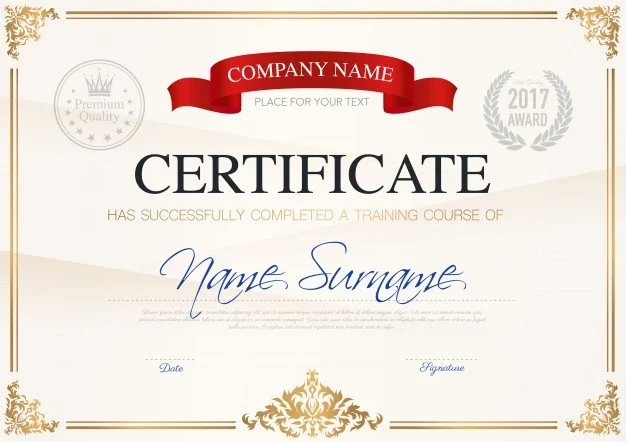
0
+
Google Reviews

0
+
This course starts with Data Science and Statistics using Python and then complete knowledge of Data Science with S-A-S. It covers both the aspects of Statistical concepts and the practical implementation using S-A-S. If you’re new to Programming , don’t worry – the course starts with a crash course to teach you all basic programming concepts. If you’ve done some programming before or you are new in Programming, you should pick it up quickly.This course shows you how to get set up on Microsoft Windows-based PC’s; the sample code will also run on Mac OS or Linux desktop systems.


Choosing to learn Terraform can be highly beneficial for several reasons:
1. Infrastructure as Code (IaC): Terraform allows you to define and manage your infrastructure as code. This approach provides numerous benefits, including version control, repeatability, and consistency in infrastructure deployments. With Terraform, you can codify your infrastructure, making it easier to manage, maintain, and scale.
2. Multi-Cloud Support: Terraform supports multiple cloud providers, including AWS, Azure, Google Cloud Platform (GCP), and others. This means you can use the same tooling and processes to manage infrastructure across different cloud environments, enabling hybrid and multi-cloud deployments.
3. Automation and Orchestration: Terraform automates the provisioning and management of infrastructure resources, allowing you to define complex infrastructure setups with ease. By using Terraform, you can automate repetitive tasks, reduce manual errors, and increase efficiency in infrastructure management.
4. Scalability and Flexibility: Terraform is highly scalable and flexible, making it suitable for managing infrastructure at any scale. Whether you’re deploying a single virtual machine or a complex microservices architecture, Terraform provides the tools and capabilities to manage your infrastructure effectively.
5. Community and Ecosystem: Terraform has a large and active community of users, contributors, and module developers. This vibrant ecosystem provides access to a wide range of reusable modules, plugins, and integrations, making it easier to leverage best practices and accelerate development.
6. Cloud Native Integration: Terraform integrates seamlessly with cloud-native technologies such as Kubernetes. This allows you to manage both infrastructure and application deployments using a unified workflow, simplifying the management of modern, containerized applications.
7. Compliance and Governance: Terraform supports compliance and governance requirements by enabling you to define and enforce policies, standards, and configurations as code. With Terraform, you can implement security controls, enforce best practices, and ensure consistency across your infrastructure deployments.
8. Career Opportunities: Terraform skills are in high demand in the job market. By learning Terraform, you can increase your value as a professional and open up career opportunities in roles such as DevOps Engineer, Cloud Engineer, Infrastructure Engineer, and Site Reliability Engineer. Overall, Terraform provides a powerful and versatile toolkit for managing infrastructure as code. Whether you’re working in a cloud-native environment or managing traditional infrastructure, Terraform can help you automate, manage, and scale your infrastructure effectively.






Data Science With S-A-S Course Content
introduction To Analytics
Global Certification: Induction and walk through
Understanding Datasets
Base S-A-S – Accessing The Data
Understanding Data Step Processing
Importing Raw Data Files
Accordion TitleImporting and Exporting Data (Fixed Format / Delimited)
Atypical importing cases (mixing different style of inputs)
Hypothesis Testing and ANOVA
Measure Model Performance
Data Understanding, Managing And Manipulation
Understanding and Exploration Data
Data Manipulation
Combining Datasets (Appending and Merging)
Data Mining With Proc SQL
Introduction to Databases
Macros For Automation
Fundamental Of Statistics
Introduction To Predictive Modelling
Data Preparation
Segmentation
Linear Regression
Logistic Regression
Introduction – Applications
Time Series Forecasting
Introduction To Machine Learning
Regression & Classification Model Building
+91 8882400500




A small river named Duden flows by their place and supplies it with the necessary regelialia. It is a paradisematic country, in which river named Duden flows by their place and supplies it with the necessary
1. Basic user account management (creating, modifying, and deleting users).
2. Password resets and account unlocks.
3. Basic file system navigation and management (creating, deleting, and modifying files and directories).
4. Basic troubleshooting of network connectivity issues.
5. Basic software installation and package management (installing and updating software packages).
6. Viewing system logs and checking for errors or warnings.
7. Running basic system health checks (CPU, memory, disk space).
8. Restarting services or daemons.
9. Monitoring system performance using basic tools (top, df, free).
10. Running basic commands to gather system information (uname, hostname, ifconfig).
1. Intermediate user account management (setting permissions, managing groups).
2. Configuring network interfaces and troubleshooting network connectivity issues.
3. Managing file system permissions and access control lists (ACLs).
4. Performing backups and restores of files and directories.
5. Installing and configuring system monitoring tools (Nagios, Zabbix).
6. Analyzing system logs for troubleshooting purposes.
7. Configuring and managing software repositories.
8. Configuring and managing system services (systemd, init.d).
9. Performing system updates and patch management.
10. Monitoring and managing system resources (CPU, memory, disk I/O).
1. Advanced user account management (LDAP integration, single sign-on).
2. Configuring and managing network services (DNS, DHCP, LDAP).
3. Configuring and managing storage solutions (RAID, LVM, NFS).
4. Implementing and managing security policies (firewall rules, SELinux).
5. Implementing and managing system backups and disaster recovery plans.
6. Configuring and managing virtualization platforms (KVM, VMware).
7. Performance tuning and optimization of system resources.
8. Implementing and managing high availability solutions (clustering, load balancing).
9. Automating system administration tasks using scripting (Bash, Python).
10. Managing system configurations using configuration management tools (Ansible, Puppet).
1. Learning basic shell scripting for automation tasks. 2. Understanding file system permissions and ownership. 3. Learning basic networking concepts (IP addressing, routing). 4. Learning how to use package management tools effectively. 5. Familiarizing with common Linux commands and utilities. 6. Understanding basic system architecture and components. 7. Learning basic troubleshooting techniques and methodologies. 8. Familiarizing with basic security principles and best practices. 9. Learning how to interpret system logs and diagnostic output. 10. Understanding the role and importance of system backups and restores.
1. Advanced scripting and automation techniques (error handling, loops).
2. Understanding advanced networking concepts (VLANs, subnetting).
3. Familiarizing with advanced storage technologies (SAN, NAS).
4. Learning advanced security concepts and techniques (encryption, PKI).
5. Understanding advanced system performance tuning techniques.
6. Learning advanced troubleshooting methodologies (root cause analysis).
7. Implementing and managing virtualization and cloud technologies.
8. Configuring and managing advanced network services (VPN, IDS/IPS).
9. Implementing and managing containerization technologies (Docker, Kubernetes).
10. Understanding enterprise-level IT governance and compliance requirements.
1. Designing and implementing complex IT infrastructure solutions. 2. Architecting and implementing highly available and scalable systems. 3. Developing and implementing disaster recovery and business continuity plans. 4. Conducting security audits and vulnerability assessments. 5. Implementing and managing advanced monitoring and alerting systems. 6. Developing custom automation solutions tailored to specific business needs. 7. Providing leadership and mentorship to junior team members. 8. Collaborating with other IT teams on cross-functional projects. 9. Evaluating new technologies and making recommendations for adoption. 10. Participating in industry conferences, workshops, and training programs.
Abu Dhabi
Abu Dhabi
Abu Dhabi
Abu Dhabi
Abu Dhabi
Abu Dhabi
Abu Dhabi
Abu Dhabi
Abu Dhabi
Abu Dhabi
Abu Dhabi
Abu Dhabi
Abu Dhabi
Abu Dhabi
Abu Dhabi
Abu Dhabi
Abu Dhabi
Abu Dhabi
Abu Dhabi
Abu Dhabi
Abu Dhabi
Abu Dhabi
Abu Dhabi
Abu Dhabi
Abu Dhabi
Abu Dhabi
Abu Dhabi
Abu Dhabi
Abu Dhabi
Abu Dhabi
Abu Dhabi
Abu Dhabi
Abu Dhabi
Abu Dhabi
Abu Dhabi
Abu Dhabi
Abu Dhabi
Abu Dhabi
Abu Dhabi
Abu Dhabi







(Our Team will call you to discuss the Fees)


(Our Team will call you to discuss the Fees)